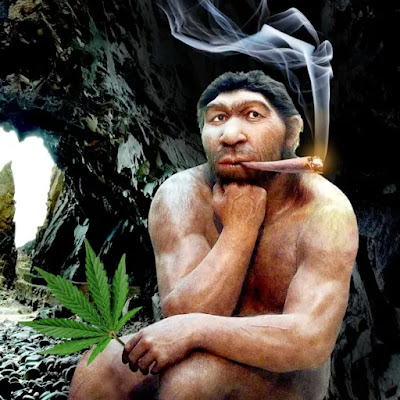Ryan Hogg (rhogg@insider.com) Business Insider via MSN, 4/2023; Eds., Wisdom Quarterly
.
Ancient humans were getting high on hallucinogenic drugs during cave rituals 3,000 years ago: study
- Scientists have discovered the use of hallucinogenic [shamanic, entheogenic, mind-manifesting psychedelic] drugs by humans 3,000 years ago.
- They believe shamans used natural plant substances as part of rituals held at the Es Càrritx cave in Menorca.
- Previous evidence of ancient entheogen use had been indirect and largely based on depictions in amazing art, both on cave walls and artifacts.
 |
| The evidence: ancient hair samples |
The cave was first occupied around 3,600 years ago and was used as a funeral space until around 2,800 years ago, the researchers said.
The study, published the journal Scientific Reports, found psychoactive substances atropine, scopolamine, and ephedrine on hair strands, which had been dyed red.
 |
| We're forming a whole new picture of you, Neander Tall. You're just like us, but not as delicate. |
 |
| The 3K-y.-o. hair island cave (Sarah Michals/Shutterstock/Scientific Reports/Nature.com). |
.
 |
| Mind ur own business, Moderns it's a cave thang |
- [NOTE: To label something a "hallucination" for falling outside the range of ordinary consensus reality is wrong. It is not unreal or a delusion simply because others have not yet seen it and agreed that it is so. There is objective reality, but very few are aware of it. We merely know our subjective reality, our perceptions and interpretations. This may be expanded and contracted by our thinking, cultural training, and the company we keep. What someone in a visionary state sees is not unreal, less real, or a hallucination because we, outside of that state, do not have the compacity to confirm or deny it. If we expand our awareness, we may indeed see the exact same thing. And if two or more see something, we agree that that is a consensus and therefore part of reality. For example, during a near-death experience, many individuals report seeing the same thing. That suggests they are seeing something real that most of us have not yet accessed and confirmed but which await us should be come close to death. Moreover, there is a phenomenon as yet unexplained by science wherein a group of people have a "shared death experience." This refers to people not near death experiencing what the person near-death is seeing. They do not speak of it as it is happening, yet they recount the same experience? It is not a mass psychosis or hallucination if they are seeing the exact same thing at the exact same time. But people not privy to the experience will have to call it a "hallucination" to preserve their perceived grip on this consensus reality we mostly share other than individual variations in perception and interpretation.]
 |
| We were communing with nature in the cave. |
The scientists believe the substances, likely derived from various plants [natural entheogenic substances containing DMT], were used as part of rituals held at the cave.
These may have involved shamans [intermediaries] "who were capable of controlling the side-effects of the plant drugs," according to the study.
The strands of hair had been placed in wooden and horn containers decorated with concentric circles.
"The concentric circles on the wooden containers may have depicted eyes and could have been a metaphor for inner vision related to a drug-induced altered state of consciousness," according the press release.
- [This would coincide with the modern-day art of visionary Alex Grey, who better than anyone currently alive seems to capture the essence of entheogenic experiences using DMT, or the "spirit molecule," and/or the opening of the third eye (Buddhist dibba-cakkhu, Hindu yogic agni chakra).]
 |
| There were eight Neanderthal groups (MSN) |
"As preserved human hair is rare in archaeological contexts, this was an unusual opportunity to detect levels of drugs in biological samples," Prof. Elisa Guerra-Doce, an associate professor of prehistory at the University of Valladolid, told Motherboard.
Previous evidence of drug [medicinal plant] use by ancient humans had been indirect and largely based on depictions in art. More




















































































































































































































































No comments:
Post a Comment